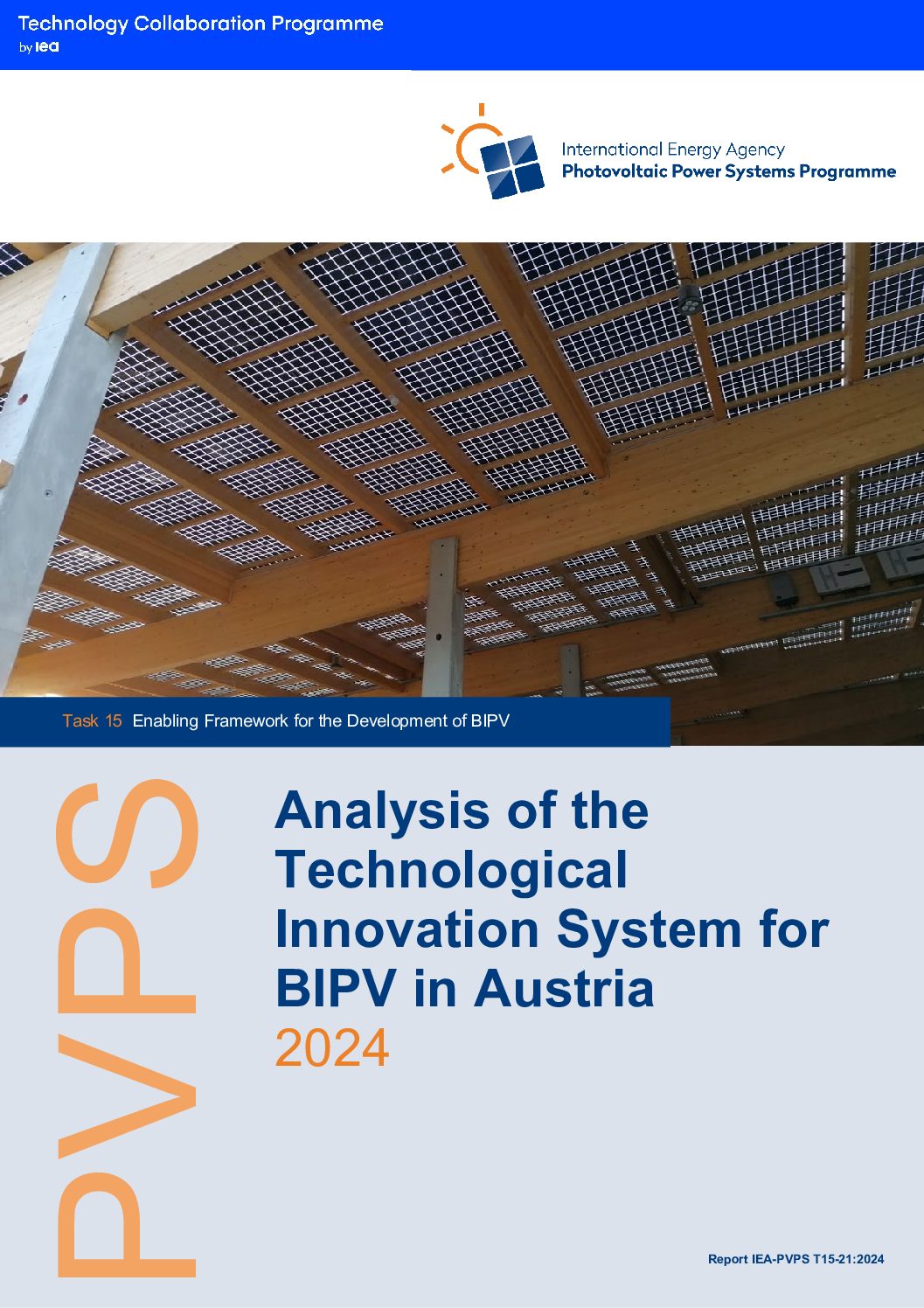This report analyzes the Building-Integrated Photovoltaics (BIPV) industry in Austria using the Technological Innovation System (TIS) approach. The analysis aims to facilitate and support the implementation of BIPV in Austria and support the innovation and industrial development of BIPV solutions.
The TIS framework provides a tool that enables a structured and objective perspective on the entire value chain of BIPV, including the interaction between its parts (networks) and its stakeholders (actors). Thus, the analysis identifies what actors participate in the Austrian technological innovation system, the networks they use to interact, and the institutions that condition all of them.
The main authors have identified the 3 key takeaways from the report:
- The market for Building Integrated Photovoltaics (BIPV) in Austria is still a niche market, with integrated roof and façade systems for residential buildings as the most established application.
- A trend in Austria is the production of transparent glass/glass modules for integration in facades, skylights, winter gardens, or courtyard roofing, but also colored and semitransparent PV modules.
- The main recommendations to stimulate the development of BIPV in Austria are to involve (BI)PV in the early stages of the building planning process, to publicize successful implementation projects through various channels, to harmonize PV standards and construction codes, and to enact a law that requires every sealed area to be checked for the possible dual use of (BI)PV.
